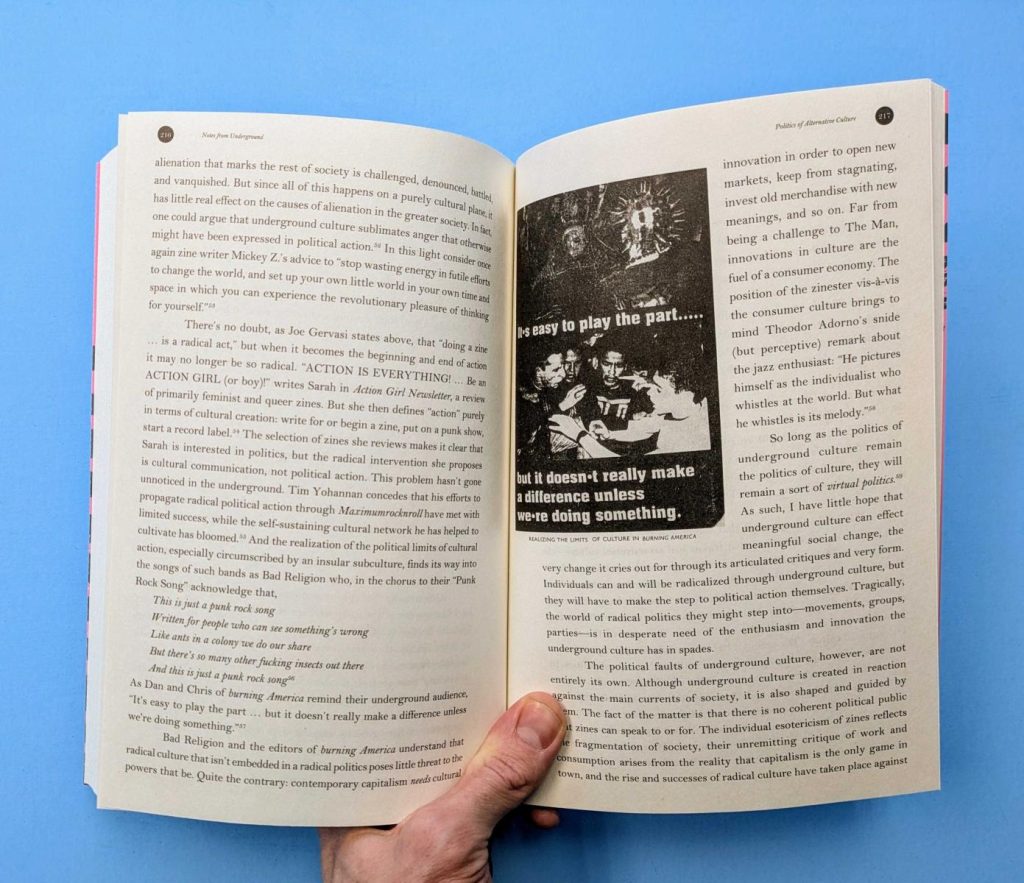The Revolution of Zines: Independent Writing and DIY Culture in the Digital Age

The Rise of Zines in the Digital Age
In the ever-evolving landscape of media, **zines** have carved out a unique space that embodies the spirit of **independent writing** and **DIY culture**. With the advent of the digital age, these small-circulation publications have transformed from underground staples to a vibrant means of creative expression. Historically, zines were crucial for those who wanted to share their voice and stories outside the mainstream media narrative, often addressing marginalized issues or unfiltered experiences.
What makes zines particularly compelling today? Consider the following features:
- Accessibility: Anyone with a passion for writing or art can produce and distribute their work. This low barrier to entry encourages countless individuals to explore their creativity. Many zines are created using simple resources; for instance, authors often utilize home printers or even digital formats to share their work.
- Diversity: Zines cover an array of topics, including feminism, politics, culture, and personal anecdotes. For example, feminist zines such as “Grrrl Zine Network” have provided a crucial platform for women to express their identities, share experiences, and discuss societal issues. On the other end of the spectrum, zines addressing niche hobbies, like DIY gardening or retro video games, showcase the vast interests and talents of creators from all walks of life.
- Community Building: Zines often foster connections among like-minded individuals, creating networks of support. Events like zine festivals promote not just the work of individual creators, but also collaboration and dialogue among diverse groups. For instance, the “Chicago Zine Fest” has grown significantly over the years, serving as a gathering point for creators from different backgrounds to connect and inspire one another.
These publications gained prominence in the 1970s and 1980s through punk culture and social movements. Yet, in recent years, they have resurged in popularity, aided by **digital platforms** that enhance their reach. With the rise of social media, artists and writers are now able to showcase their zines to global audiences, breaking the confines of traditional publishing. Platforms like Instagram and Etsy not only allow creators to sell their zines but also create engaging visual content that reaches potential readers worldwide.
With every page turned, readers gain insight into raw perspectives and untold stories. Through zines, individuals can explore narratives that often go unheard in mainstream media, reflecting the complex tapestry of contemporary society. Understanding the **zine revolution** offers a window into the broader trends of communication in our increasingly digital world. The fusion of physical and digital spaces creates an exciting platform for self-expression and networking, empowering new generations to share their truth.
As we delve deeper into the world of zines, it becomes clear that their impact extends far beyond simple publications. They embody a cultural shift towards valuing grassroots storytelling, fostering inclusivity, and harnessing the power of community in an age defined by connectivity and overwhelming information. As zines continue to evolve, they will undoubtedly remain a vital part of the independent media landscape, beckoning curious readers and aspiring writers alike.

DISCOVER MORE: Click here to dive deeper into storytelling techniques
Revitalizing Independent Voices
The contemporary zine movement reflects a striking revival of **independent writing** at a time when traditional media often struggles to address the intricacies of personal and social narratives. Zines offer a fresh canvas for creators yearning to express their thoughts, challenge dominant narratives, or resist homogenization of content produced by media conglomerates. This resurgence can be attributed to several key factors that illustrate their significance in the digital age.
- Affordability of Production: In an era characterized by high costs associated with publishing, zines provide a cost-effective alternative. Many creators utilize basic digital tools and home printing, making it feasible to produce high-quality content without the need for extensive funding or institutional backing. The accessibility of affordable software and platforms enables innovative formats such as interactive PDFs, increasing creativity in zine production.
- Immediate Feedback and Interaction: Unlike traditional publishing, where feedback loops can span months or even years, zines benefit from rapid interaction with audiences. Social media channels enable creators to garner instant responses, fostering a dynamic connection with readers. This immediacy empowers writers and artists to adapt, evolve, and respond to viewer engagement, leading to rich and adaptive storytelling.
- Niche Markets and Targeted Audiences: The diversity of topics featured in zines creates a unique appeal to niche markets. From **queer identities** to environmental activism, creators are free to navigate diverse subjects without adhering to commercial pressures. This resonates particularly well with younger audiences who increasingly seek authentic content that mirrors their interests and experiences, creating a communal atmosphere of support.
Furthermore, zines embody a tangible resistance to the saturation of digital content. Amidst the constant barrage of online information, these physical publications can be treasured objects, encouraging readers to slow down and engage with the material on a deeper level. In venues like local bookstores, coffee shops, and indie art spaces, zines have become powerful artifacts of culture that evoke connection and dialogue.
The cross-pollination between the physical and digital realms greatly enhances the visibility of zine culture. Many creators promote their work through social media platforms, utilizing visual storytelling to attract readers. Influential hashtags like #ZineCulture and #DIYPublishing have enabled communities to form around shared passions, creating a sense of belonging that transcends geographic limitations. Through hashtags and online communities, discussions about content and themes proliferate, propelling zines into a global conversation centered around independent media.
As zines flourish, they are not merely ephemeral distractions; rather, they play a vital role in cultivating a connected, engaged, and empowered populace. Readers are encouraged to explore the unique landscapes of zine narratives, which often provide insights into the complexities of personal, cultural, and political identities. The trajectory of zine culture represents a significant cultural shift towards validating grassroots storytelling, challenging the conventional norms of media, and fostering inclusivity.
The Rise of Digital Zines in Today’s Society
The advent of the digital age has dramatically transformed the landscape of independent writing, giving birth to a new generation of zines that thrive online. This evolution brings forth unique opportunities for creators to share their voices without the restrictions imposed by traditional publishing. The accessibility of digital platforms not only allows writers to create and distribute their work more freely but also enables them to reach global audiences, bridging geographical gaps.Digital zines often foster community engagement, allowing readers and writers to interact in ways that print publications could never achieve. By leveraging social media, independent writers can cultivate a following, spark conversations, and even collaborate with other creatives. Additionally, the DIY culture that zines embody empowers individuals to curate their own content visually and thematically, fostering an authentic connection with their audience.Moreover, the economic barriers associated with printing and distribution are significantly reduced in the digital realm. Writers can publish their work at little to no cost, making independent creation more accessible than ever before. This democratization of media aligns with the ethos of zine culture—a celebration of personal expression and grassroots initiatives.In summary, the rise of digital zines signifies not just a different medium of expression, but a wave of transformation in the way we perceive media consumption and creator-audience relations. This shift invites all to participate, encouraging diverse perspectives that enrich the cultural tapestry of independent writing. As we delve deeper into this zine revolution, we uncover the implications it holds for the future of literature, art, and social discourse.
| Category 1 | Category 2 |
|---|---|
| Digital Accessibility | Enables writers to publish and distribute work easily. |
| Community Engagement | Fosters direct interaction between creators and their audience. |
| Cost-Effective Creation | Reduces economic barriers associated with traditional publishing. |
The implications of these developments are expansive, inviting exploration into the cultural impacts of zines as a medium in the context of independent writing and how they influence the broader discourse on creativity in the digital age.
DIVE DEEPER: Click here to discover the evolution of musical instruments
Creating Community Through Zines
The essence of zines lies not only in their content but also in their ability to nurture community and collaboration. In the digital age, where connections can often feel superficial, zines provide a tangible, intimate way for creators and readers to engage with one another. They become vessels for personal expression, fostering kinships in an evolving landscape of independent media.
- Collective Projects and Collaboration: A distinctive feature of the zine movement is the spirit of collaboration it engenders. Many zines are created as collective efforts, with multiple contributors coming together to curate a shared vision. Projects such as the “Sister Spit” series highlight LGBTQ+ narratives and showcase diverse voices that may be marginalized in mainstream publications. By collaborating, these creators strengthen their communities while amplifying messages that resonate on deeper levels.
- Localized Conversations and Support Networks: Zines often reflect specific regional cultures, addressing local issues, events, and art scenes. For example, zines originating from urban centers like New York or Los Angeles often capture the vibrancy and challenges of city life while nurturing localized support networks. They serve as a bridge connecting like-minded individuals, allowing them to navigate shared experiences and build solidarity within their communities.
- Workshops and Zine Fests: Zine culture is further propelled by events such as zine fairs and workshops, where creators gather to share skills, knowledge, and resources. The well-known “Los Angeles Zine Fest” and “Chicago Zine Fest” have drawn massive crowds, becoming hubs for dialogue and creativity. These gatherings foster mentorship and collaboration, allowing novice writers to learn from established creators while discovering a wealth of unique perspectives.
In addition to creating communities, zines frequently highlight underrepresented experiences, allowing voices that are often sidelined in mainstream discourse to take center stage. With crucial conversations surrounding race, gender identity, mental health, and socio-economic inequities, zines create space for narratives that defy conventional representations. Oftentimes, these works inspire activism, providing a roadmap for addressing systemic injustices that might otherwise remain unheard.
The growing interest in zines is not only a response to the overwhelming nature of digital content but also a call for authenticity amid a culture inundated with curated personas. Zines strip away the glossy facade often associated with digital media, offering a raw and personal glimpse into individual lives. This aspect resonates strongly with audiences seeking genuine connections and stories that reflect their realities.
Importantly, the accessibility of zine production fosters a sense of empowerment among creators. Independent publishers are not constrained by profit motives or corporate agendas, enabling them to tackle pressing social issues and personal narratives with honesty and integrity. Publications like “The Anti-Racism Zine” strive to confront systemic racism while educating readers, showcasing the capacity of zines in shaping public discourse.
As zine culture continues to flourish, it blurs the line between creator and consumer, promoting a more participatory form of storytelling. Readers are invited not only to engage with the content but to envision themselves as potential contributors to this dynamic narrative landscape. With each new issue, zines inspire others to pick up the pen or create their own platforms, solidifying their role within the broader movement of independent writing and DIY culture in the digital age.
DISCOVER MORE: Click here to learn how to craft with recycled materials
Conclusion: The Enduring Power of Zines in an Evolving Landscape
As we navigate through the digital age, the revolution of zines stands out as a profound testament to the enduring power of independent writing and DIY culture. Zines not only serve as artistic expressions but also foster connection and dialogue among diverse communities. Their unique ability to amplify marginalized voices and provoke thought on critical issues reflects a grassroots approach to media that resonates deeply in today’s rapidly changing landscape.
The accessibility of zine production democratizes the creative process, inviting individuals to share their experiences and perspectives without the limitations traditionally imposed by mainstream media. This autonomy allows zines to address topics that often remain unexamined, from social justice to personal identity, striking a powerful chord with readers seeking authenticity and representation.
As the zine movement creates local support networks through workshops and festivals, it encourages collaboration that strengthens bonds among creators while invigorating cultural discourse. The interaction between readers and contributors blurs the lines of traditional media consumption, enabling a participatory model of storytelling that feels more community-driven than ever.
Ultimately, the future of zines promises continued innovation, adaptability, and relevance in an era dominated by digital content. Whether emerging as physical publications in urban spaces or evolving into digital formats that reflect contemporary aesthetics, zines will remain vital conduits for independent thought and creativity. As they continue to inspire new generations of writers and artists, zines invite everyone to engage actively in shaping the narratives that define us all.


